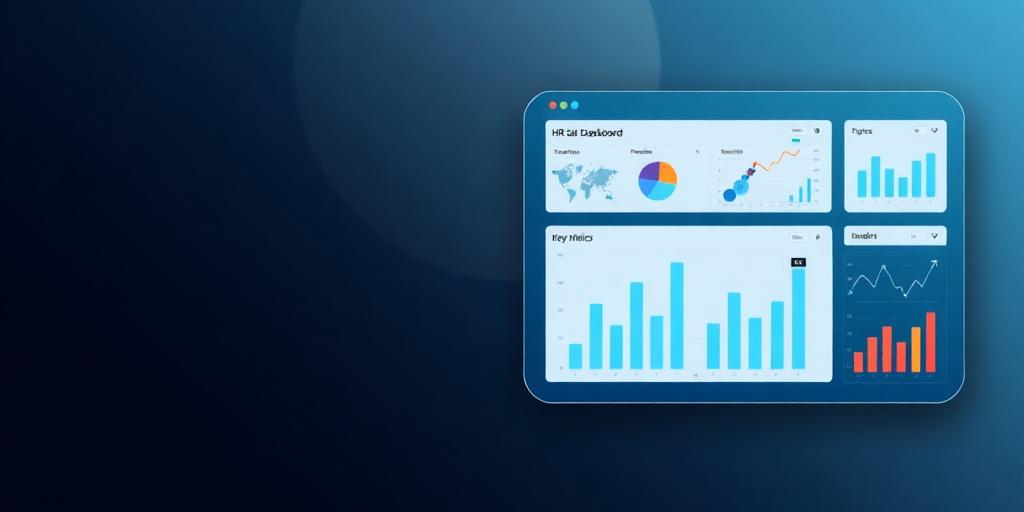Behind the Scenes: Building a Data Dashboard for HR
In today's data-driven world, Human Resources (HR) departments are increasingly leveraging data to make informed decisions, optimize processes, and improve employee experiences. A well-designed data dashboard can be a powerful tool for HR professionals, providing a centralized view of key metrics and insights. This post delves into the essential elements and considerations involved in building an effective HR data dashboard.
1. Defining Objectives and Key Performance Indicators (KPIs)
Before embarking on the development process, it's crucial to define the specific objectives the dashboard aims to achieve. What questions should it answer? What decisions will it inform? Once the objectives are clear, identify the relevant KPIs that will measure progress and success. Common HR KPIs include:
- Employee Turnover Rate: Measures the rate at which employees leave the organization.
- Time to Hire: Tracks the time it takes to fill open positions.
- Training Completion Rate: Monitors the percentage of employees completing required training programs.
- Employee Engagement Score: Gauges employee satisfaction and commitment.
- Cost per Hire: Calculates the expenses associated with recruiting and hiring new employees.
2. Data Sources and Integration
HR data resides in various systems, including Human Resources Information Systems (HRIS), Applicant Tracking Systems (ATS), Learning Management Systems (LMS), and performance management platforms. Integrating these disparate data sources is essential for creating a comprehensive and accurate dashboard. This often involves data extraction, transformation, and loading (ETL) processes to consolidate data into a central data warehouse or data lake.
3. Choosing the Right Technology
A variety of business intelligence (BI) and data visualization tools are available for building HR dashboards. Popular options include:
- Tableau: A robust and versatile platform with advanced visualization capabilities.
- Power BI: Microsoft's BI tool, offering seamless integration with other Microsoft products.
- Google Data Studio: A free and user-friendly option for creating interactive dashboards.
- Qlik Sense: A data analytics platform known for its associative engine and data discovery features.
The choice of technology depends on factors such as budget, technical expertise, data volume, and desired level of customization.
4. Dashboard Design and User Experience
A well-designed dashboard should be intuitive, visually appealing, and easy to navigate. Consider the following design principles:
- Prioritize key metrics: Display the most important KPIs prominently.
- Use clear and concise visualizations: Choose appropriate chart types (e.g., bar charts, line graphs, pie charts) to represent data effectively.
- Provide context and comparisons: Include benchmarks, targets, and historical data for context.
- Enable drill-down capabilities: Allow users to explore data in more detail.
- Ensure mobile responsiveness: Optimize the dashboard for viewing on different devices.
5. Data Governance and Security
HR data is highly sensitive and confidential. Implementing robust data governance and security measures is paramount. This includes:
- Access controls: Restricting access to the dashboard based on roles and permissions.
- Data encryption: Protecting data both in transit and at rest.
- Data masking: Obscuring sensitive data elements.
- Compliance with data privacy regulations: Adhering to regulations such as GDPR and CCPA.
6. Iterative Development and User Feedback
Building an HR data dashboard is an iterative process. Start with a minimum viable product (MVP) and gradually add features and functionalities based on user feedback. Regularly solicit feedback from HR professionals and stakeholders to ensure the dashboard meets their needs and provides valuable insights.
Conclusion
An effective HR data dashboard can empower HR departments to make data-driven decisions, improve efficiency, and enhance employee experiences. By carefully considering the objectives, data sources, technology, design, security, and user feedback, organizations can build a dashboard that unlocks the full potential of their HR data.









